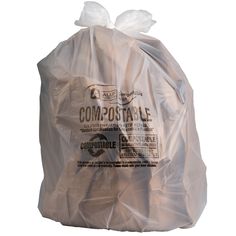Compostable plastic bags
Compostable plastic bags are one of the easiest ways to do your part to improve the environment. These sacks are designed to compost naturally, while reducing the waste that ends up in landfills. They’re also a good way to boost soil quality and reduce odors.
Compostable bags are often made from plant-based materials. When they decompose, they produce carbon dioxide and water. This allows the bag to break down and make compost, a natural substance that can be used for landscaping, farming, and more.
Compostable bags do require some microorganisms to decompose, though. Generally, they should be placed in an industrial composting facility. For the composting process to work, it’s important to keep the bags in a controlled environment with a balanced ratio of oxygen, nitrogen, and phosphorus.
The process of composting organic matter takes time. Typically, it can take up to three months for the material to decompose. Depending on the materials and technique, it can take much longer.
A biodegradable bags can be a great alternative to conventional plastic bags, but they’re not without their problems. One such problem is that they don’t actually decompose all that well. Another is that they’re not recyclable with normal plastics.
A study from the University of Plymouth compared biodegradable bags to their traditional counterparts. The study examined the performance of five common plastic bag materials and their impact on a variety of environments.

Source:https://i.pinimg.com
Oxo-degradable plastic bags
Oxo-degradable plastic bags are a type of plastic that is intended to break down when exposed to oxygen. While these bags can be beneficial for some products, they are not safe for the environment and should not be used as a substitute for conventional plastics.
Oxo-biodegradable plastics are made from petroleum-based raw materials and can be used in many different ways. They can be used for pla shopping bags and other products that are short-life and require strong material. But they are not recommended for home composting.
Oxo-biodegradable additives are chemicals that are added to plastics during the manufacturing process to promote the breakdown of the material. There are several types of additives, including dithiocarbamates and metal salts. The metals are used to allow the molecular structure of the plastic to break down in the presence of oxygen.
These additives can release heavy metals, and consumers should check their products for oxidative additives. Stabilisers are also commonly added to plastics to protect them from degradation. It is unknown how much stabiliser is required and the effects of the stabiliser on the breakdown of the plastic.
Oxo-biodegradable t-shirt bags do not have a standard to prove their biodegradability. This could make them unsafe for wildlife. Some environmental campaigners claim that they are damaging the environment by creating microscopic particles that can contaminate the food chain.
Oxo-degradable plastics can also contaminate recyclable materials. However, the industry is trying to find a solution. For example, some retailers promote good quality multi-use carrier bags.

Source:https://i.pinimg.com
Life cycle of biodegradable plastic bags
It’s hard to believe, but in 2011, a study in the U.K. compared the life cycle of plastic bags made from different materials. The study measured how much energy was used and assessed the toxicity of different bag types.
Biodegradable plastic bags are promoted as a greener alternative to standard plastic bags. However, they have a lot of downsides. They take a long time to break down and can even end up in landfills where they pose serious environmental hazards.
Many people may not realize that it takes about 1000 years for a plastic bag to decompose. This makes it a long-term toxic threat to the environment.
In the meantime, microplastics continue to filter through the soil, water, and even animals. These tiny pieces of plastic litter the planet and harm seabirds, whales, turtles, and other marine life.
Plastic bags can also clog up rivers and waterways and pollute the air. They are also difficult to dispose of properly.
Some studies have found that standard plastic bags can cause more environmental problems than they solve. One study found that a compostable bags actually did better than its reusable counterpart.
Aside from being environmentally-friendly, biodegradable bags can also be a viable solution to the problem of litter. These bags should be placed in industrial composting facilities, as they provide the optimal conditions for microorganisms to breakdown the bags.


